Abstract 9/2018
Table of content
Andrzej Rudnicki – The beginnings of implementing the idea of traffic calming and parking policy in Cracow
Piotr Kącki, Urszula Duda-Wiertel – Development of the paid parking zone in Krakow 1988 – 2018
Tadeusz Kopta – Activities of the Polish Ecological Club for calming traffic and transport policy, including parking
Aleksandra Faron – Paid parking zone boundaries in relation to the location of the agglomeration railway system stops
Caroline Kubala – Determination of neutral periods for the organisation of drivers’ parking behaviour surveys in Paid Parking Zones
Arkadiusz Książek, Jan Paszkowski, Christoph Pösche – Assessment of selected traffic calming measure on the example of the Armii Krajowej street in Cracow
Marcin Kiciński, Paweł Zmuda-Trzebiatowski – Paid parking zones in small cities. Case study: Środa Wielkopolska, Poland
Szymon Fierek, Paweł Zmuda Trzebiatowski, Maciej Bieńczak – The public consultation impact on the final concept of traffic calming. Case study of Św. Łazarz District in Poznań
Abstracts
Andrzej Rudnicki
The beginnings of implementing the idea of traffic calming and parking policy in Cracow
Abstract: The aim of the article is to remind – from the perspective of over a quarter-century – pioneer in the scale of Poland actions undertaken in Cracow, in line with the current general demand for sustainable development of the city’s transport system. The genesis of the idea of a sectoral model of traffic calming for the city center of Cracow inspired by the Gothenburg solution was outlined. Characteristics of the model created in the mid-1980s were given: the principles of dividing the city center into sectors, describing the model of the sector functioning, and compared the reference model to the currently functioning solution. The process of reaching a decision regarding the area calming of traffic and paid parking in the city center of Krakow, implemented in 1988, has been extensively presented. Activities preceding the essence of the project have been outlined, characterized by the division of Śródmieście into three zones: pedestrian and bicycle, limited car traffic, limited and paid parking. The first effects of the solutions introduced, evaluated from the communication and environmental aspects, as well as the results of social acceptance tests are synthetically described. The change in approach to the role of the automotive indicator in shaping the development of the transport system – that was evaluating for years – has been presented. Regulations of parking indicators – the first in Poland included in the general plan of Cracow of 1994 are described. The article ends with the information about the beginnings of the Park and Ride system in Cracow.
Key words: traffic calming, traffic organization, traffic calming zone, parking policy
Piotr Kącki, Urszula Duda-Wiertel
Development of the paid parking zone in Krakow 1988 – 2018
Abstract: The 30th anniversary of implementation traffic calming zone in the area of Krakow’s downtown, seems to be a good opportunity to structure information on the territorial development of the paid parking zone in the years 1988 – 2018. This article shows historical context of the implementation of the paid and traffic calming system. The subsequent extension of the paid parking zone has been chronologically arranged. The territory of the zone in subsequent time stages is presented in the drawings with the map of the city center of Krakow. This is complemented by selected important information about rules of the zone’s operation, such as the current rates of parking fees, duration of the zone, or method of payment.
Key words: paid parking zone, traffic calming zone, pedestrian zone
Tadeusz Kopta
Activities of the Polish Ecological Club for calming traffic and transport policy, including parking
Abstract: The article discusses transport issues undertaken by the Polish Ecological Club (PKE) since its foundation to the present. The basic direction was drafted in the document: Quo vadis, Cracovia? What is Cracow, and what and what is to be in the future. Further the PKE documents have been an extension of the vision outlined in the above document. At the beginning, the concepts of calming car traffic were presented in order to demand the implementation of bicycle infrastructure and the dominance of public transport in transport policy in the next documents.
Key words: traffic calming, parking fees, charges for entering cities, faster tram
Aleksandra Faron
Paid parking zone boundaries in relation to the location of the agglomeration railway system stops
Abstract: This article presents the author`s concept for setting of paid parking zone boundary. The first part of the article presents the city center and downtown definition, in the light of transportation aspects. Then selected Polish cities have been analyzed in the respect of the relation between paid parking zone and downtown boundary. For these areas it was proposed to expand the zone due to the potential impact of the agglomeration railway stops. The last part of the article presents the Cracovian case – setting new boundary of downtown and paid parking zone with the respect to the impact of the stops of high effective transport system.
Key words: paid parking zone, agglomeration railway system, downtown, modal split
Caroline Kubala
Determination of neutral periods for the organisation of drivers’ parking behaviour surveys in Paid Parking Zones
Abstract: The aim of this article was to show the variability of drivers’ parking behaviours in Paid Parking Zones, appearing in particular months and days of the week. In order to develop the analysis, it was used the data for 253 working days of a full calendar year (2015). The dataset was extracted from a part of parking machines operating in the Paid Parking Zone located in central and downtown Cracow (Poland). The data provided was used to calculate the most important parking parameters – the level of occupancy and the rotation degree. Due to a large number of parking meters, it was decided to aggregate available information to the level of traffic analysis zones coming from the transport model of the Cracow agglomeration. As a result of statistical analyses, it was possible to propose periods for the organisation of the most reliable parking behaviour surveys among Paid Parking Zone users.
Key words: paid parking zone, parking research, drivers’ behaviour
Arkadiusz Książek, Jan Paszkowski, Christoph Pösche
Assessment of selected traffic calming measure on the example of the Armii Krajowej street in Cracow
Abstract: In this article before and after study is presented evaluating the introduction of traffic calming measure on the pedestrian crossing on Armii Krajowej street in Cracow. The analysed area had a very high rate of accidents involving pedestrians, therefore, a non-typical solution was introduced – the traffic bollards were set before the crossing, dividing the lanes, and narrowing the width of the lane. The aim of this solution is to prevent drivers from changing the lane, overtaking and omitting other vehicles approaching the pedestrian crossing, as well as to prevent exceeding speed limit, what causes the most of accidents there. Due to the short time from introducing the new solution, it was not possible to compare long-term statistics of accidents before and after the implementation. Therefore the paper is focused on the video recording and observation of the drivers’ behaviour, such as speed choice, overtaking and omitting other vehicles in the area of the pedestrian crossing.
Key words: traffic calming, traffic calming measures, evaluating of the effectiveness of traffic calming
Marcin Kiciński, Paweł Zmuda-Trzebiatowski
Paid parking zones in small cities. Case study: Środa Wielkopolska, Poland
Abstract: The article presents the results of research on the operation of the paid parking zone (PPZ) in a small city – Środa Wielkopolska (23,000 inhabitants, capital of Środa Wielkopolska County). The scope of work include the inventory of vertical and horizontal marking located in the PPZ, taking into account both the completeness as well as correctness of the setting from the perspective of passenger and pedestrian traffic safety. Next, the article presents the results of calculating the PPZ parking utilization rates with division into four sub-areas. The index values were obtained in two ways, i.e. based on the data from cash registers, which were obtained from the Municipal Office in Środa Wielkopolska, and by carrying out measurements of real utilization rates. Data of two months – March 2017 and March 2018 – have been compared with each other. The conducted inventory, measurements and calculations became the basis for finding a number of deficiencies and errors associated with the marking, as well as with the management of the PPZ, especially in the part concerning manual toll collection and verification of the declared time of parking in the PPZ.
Key words: paid parking zone, parking utilization rate, parking policy
Szymon Fierek, Paweł Zmuda Trzebiatowski, Maciej Bieńczak
The public consultation impact on the final concept of traffic calming. Case study of Św. Łazarz District in Poznań
Abstract: The article focuses on issues related to conducting social consultations and their impact on the transportation solutions – in particular on calming urban traffic within historical areas of the city. The article presents three variants of the traffic concept that were proposed in the Św. Łazarz District in Poznan. These proposals have been subject to social verification during consultations which were carried, both in traditional form – meetings and workshops, as well as via the Internet. As a result, after accepting some of the comments, a solution – called a compromise – was proposed. Authors of the article verified the shape of the final solution, and then have taken a try to assess whether the original assumptions for the development of the traffic calming concept in the considered area might be achieved by introducing a compromise solution. The article ends with conclusions describing the entire process – beginning from the preparation of a multi-variant concept.
Key words: public consultation, traffic calming, traffic organization

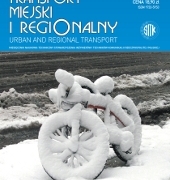 SITK RP
SITK RP 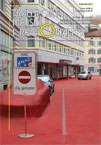 SITK RP
SITK RP 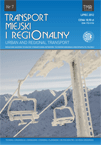 SITK RP
SITK RP 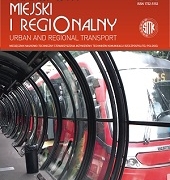
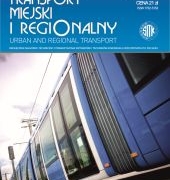 SITK RP
SITK RP 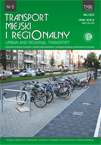 SITK RP
SITK RP 

